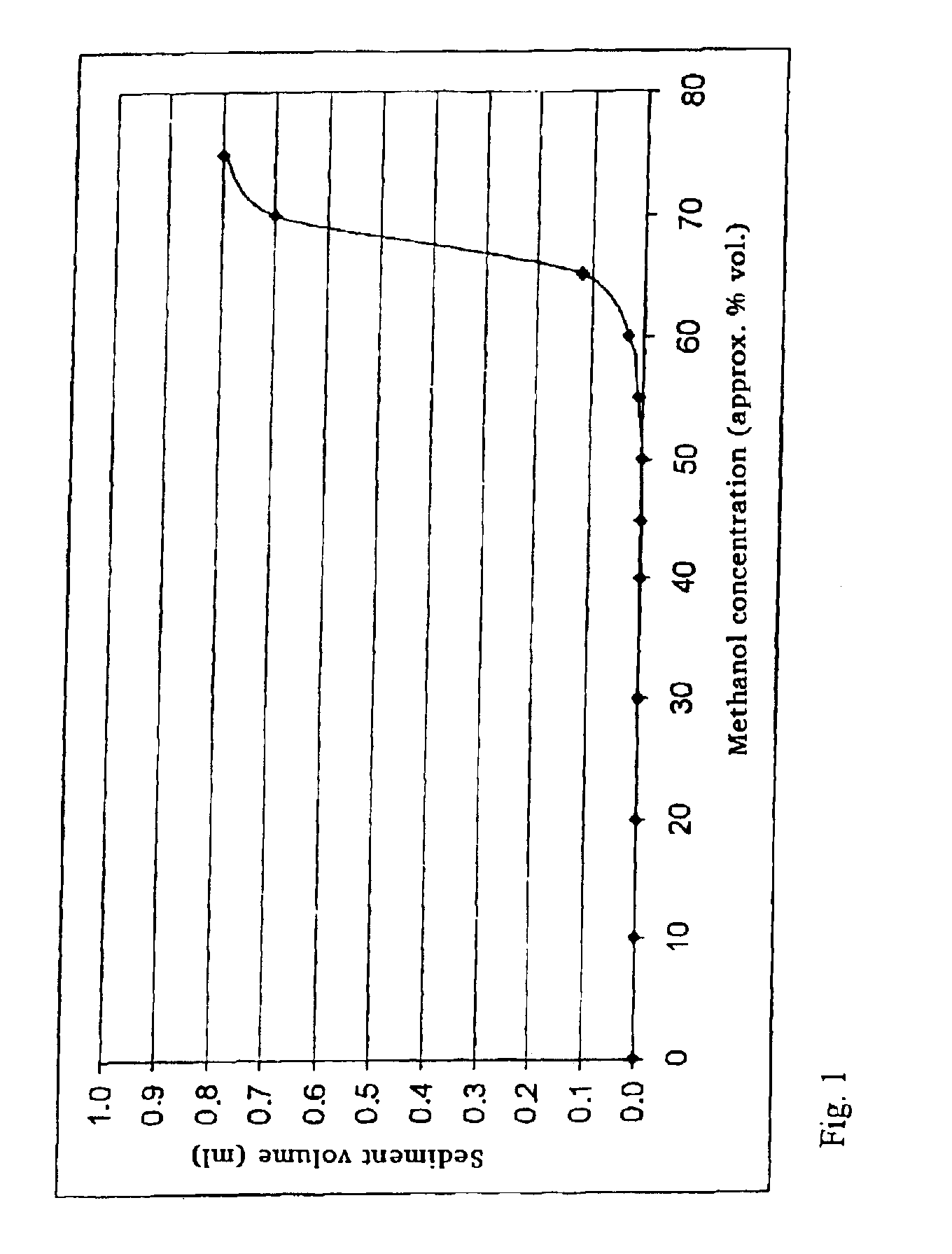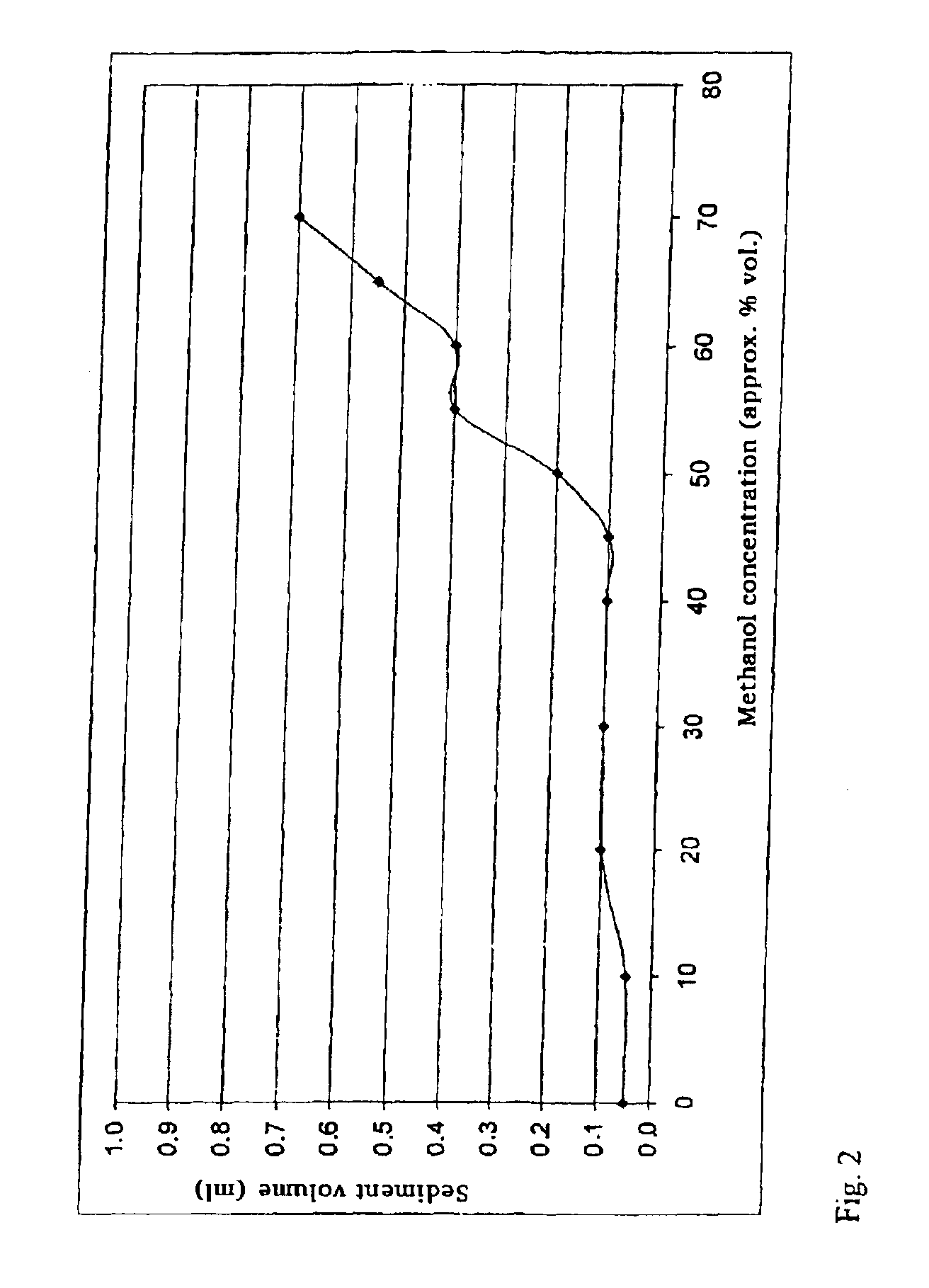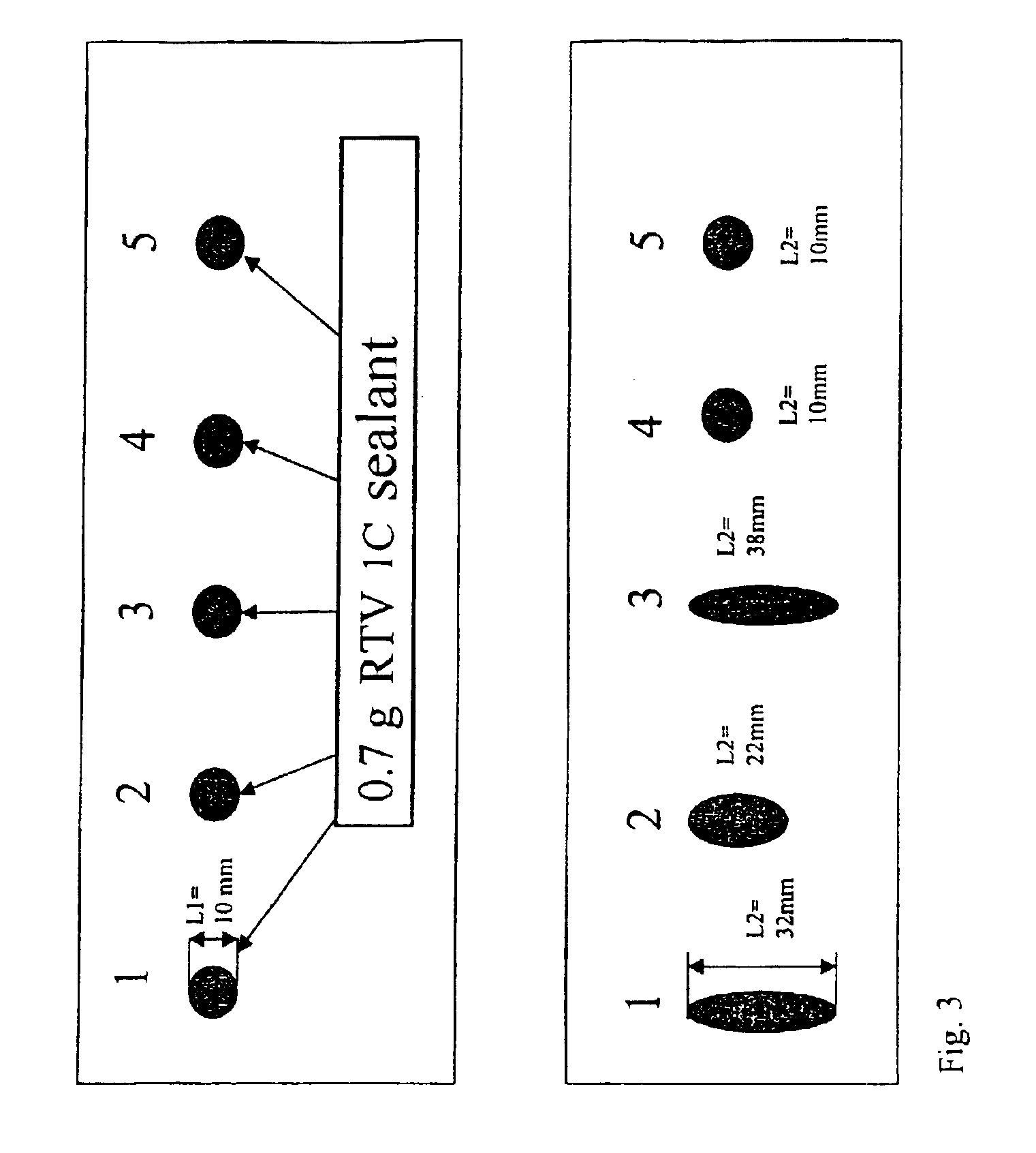Room temperature crosslinking, one component silicone rubber formulation with hydrophobic silica
- Summary
- Abstract
- Description
- Claims
- Application Information
AI Technical Summary
Benefits of technology
Problems solved by technology
Method used
Image
Examples
example 1
[0274]The drying and coating of the base silica with silicone oil (DOW CORNING (R) 200 FLUID 50 CS, carbon content approximately 33%, viscosity of 50 mPas·sec) were carried out using a spin-flash drier. The silica was then conditioned at room temperature for at least 48 hours until it had a methanol wettability of at least 20%. The analytical data of the conditioned silica are given in Table 1.1.
[0275]
TABLE 1.1Analytical data of the conditioned silicaWater%5.2pH6.1ConductivityμS41N2 surface aream2 / g84CTAB surface aream2 / g132Tapped densityg / L317Reflectance%95.9C content%4.12Methanol wettability%>20
[0276]Heat treatment was then carried out at different oxygen contents in a fluidized bed. The experimental parameters are given in Table 1.2.
[0277]
TABLE 1.2Heat treatment in a fluidized bed at varying oxygen content:Exp. 1Exp. 2Exp. 3Heat treatment time [min]606060Product temperature [° C.]320-380320-380320-380Oxygen content [%] 0-0.0014.0-6.020-22C content prior to heat treatment4.124.1...
example 2
[0280]The base silica was coated with silicone oil (dimethylpolysiloxane, 50 mPas·sec, e.g., DOW CORNING (R) 200 FLUID 50 CS, carbon content approximately 33%) in a Gericke mixer in a mass ratio of 1:1. The resulting powder was conditioned for an hour at a temperature of 105° C. This produced a material in which, although it was wettable by water, the silica and silicone oil could no longer be separated from one another in water. Mixing of this masterbatch with filtercakes of the base silica produced stable formulations in which the silicone oil no longer separated from the hydrophilic filtercake. A hydrophobic masterbatch thus prepared and filtercakes were conveyed together into the spin-flash drier, in which they were mixed and dried. The dimethylsiloxane-treated silica was conditioned by aging at room temperature for 3 days until it had attained a methanol wettability of at least 20%. The analytical data of the conditioned silica are given in Table 2.1.
[0281]
TABLE 2.1Analytical d...
example 3
[0284]The initial distribution of silicone oil (viscosity of 50 m·Pas-sec, methyl-terminated, e.g., DOW CORNING (R) 200 FLUID 50 CS, carbon content approximately 33%) on the silica (in the form of filtercakes) took place in a spin-flash drier, with simultaneous drying. The dimethylsiloxane-treated silica was conditioned at room temperature for at least 48 hours until it had attained a methanol wettability of at least 20%. The analytical data of the conditioned silica are given in Table 3.1.
[0285]
TABLE 3.1Analytical data of the conditioned silicaWater%5.2pH6.1ConductivityμS41N2 surface aream2 / g84CTAB surface aream2 / g132Tapped densityg / L317Reflectance%95.9C content%4.12Methanol wettability%>20
[0286]The material was heat-treated under oxidizing conditions in a muffle furnace with a bed height of about 1 to 2 cm at a temperature above 330-360° C. for 1 h. The analytical data of the oxidatively heat-treated precipitated silica are given in Table 3.2.
[0287]
TABLE 3.2Product data, oxidative...
PUM
| Property | Measurement | Unit |
|---|---|---|
| Temperature | aaaaa | aaaaa |
| Fraction | aaaaa | aaaaa |
| Fraction | aaaaa | aaaaa |
Abstract
Description
Claims
Application Information
 Login to View More
Login to View More - R&D
- Intellectual Property
- Life Sciences
- Materials
- Tech Scout
- Unparalleled Data Quality
- Higher Quality Content
- 60% Fewer Hallucinations
Browse by: Latest US Patents, China's latest patents, Technical Efficacy Thesaurus, Application Domain, Technology Topic, Popular Technical Reports.
© 2025 PatSnap. All rights reserved.Legal|Privacy policy|Modern Slavery Act Transparency Statement|Sitemap|About US| Contact US: help@patsnap.com



